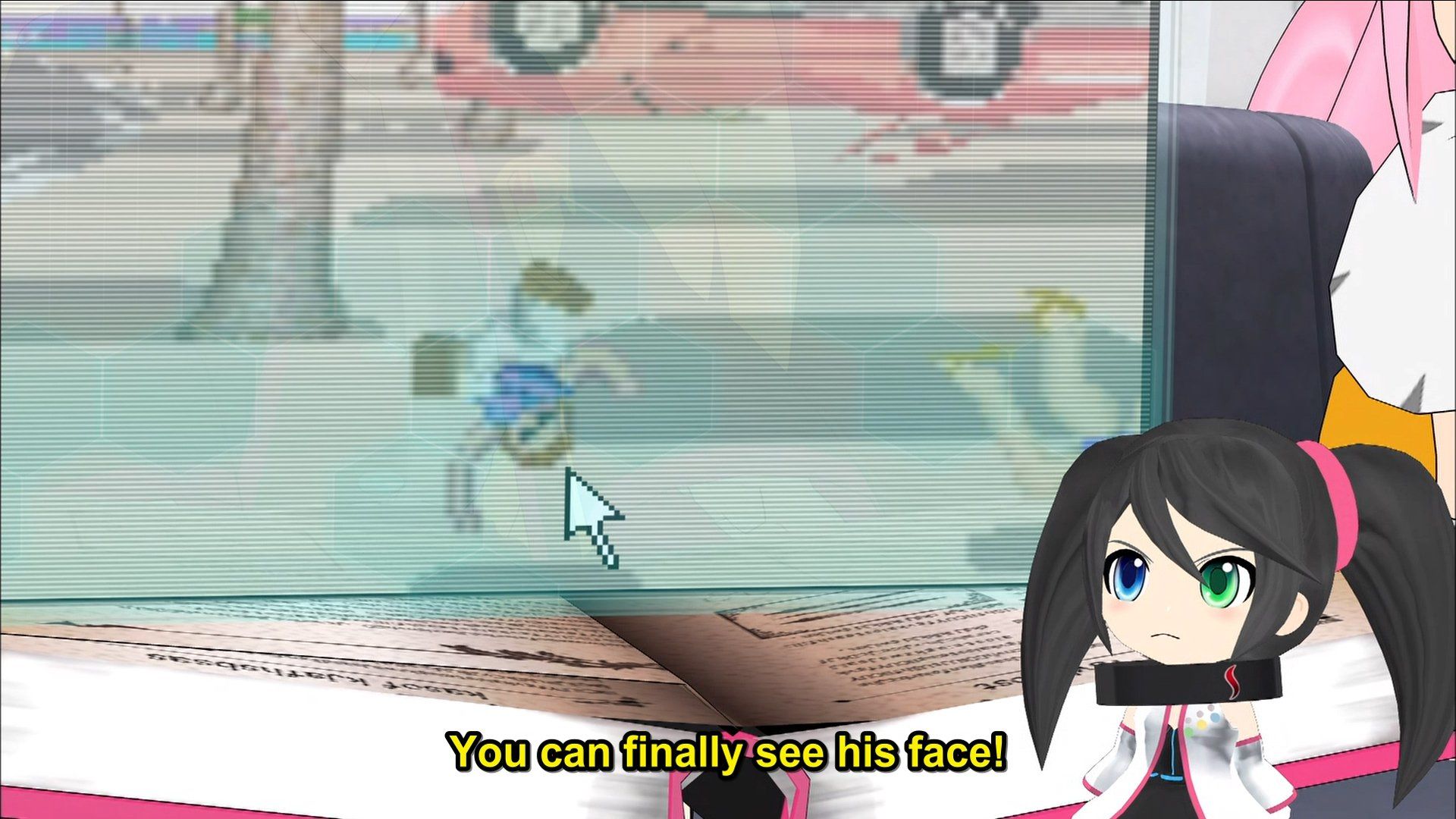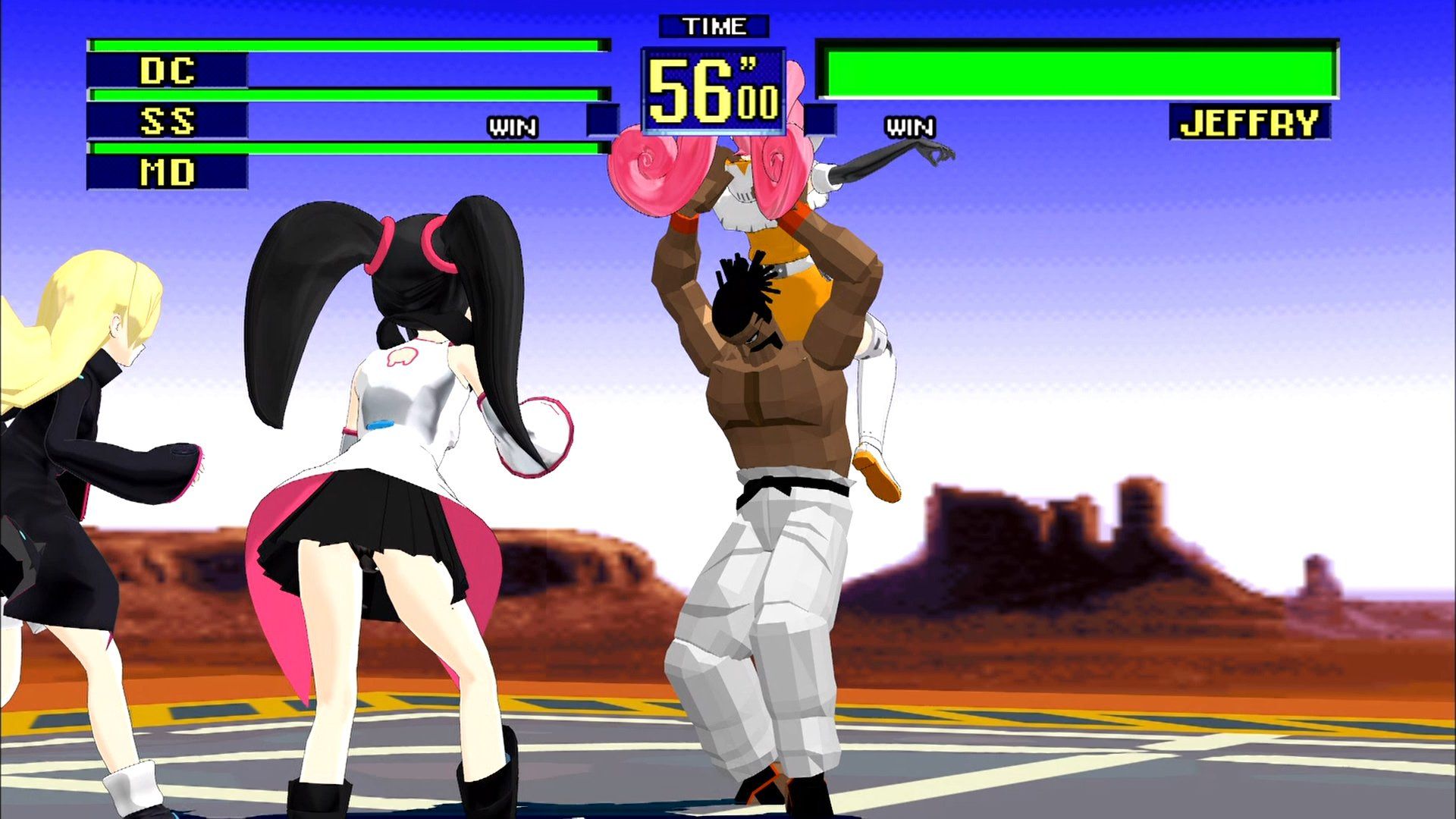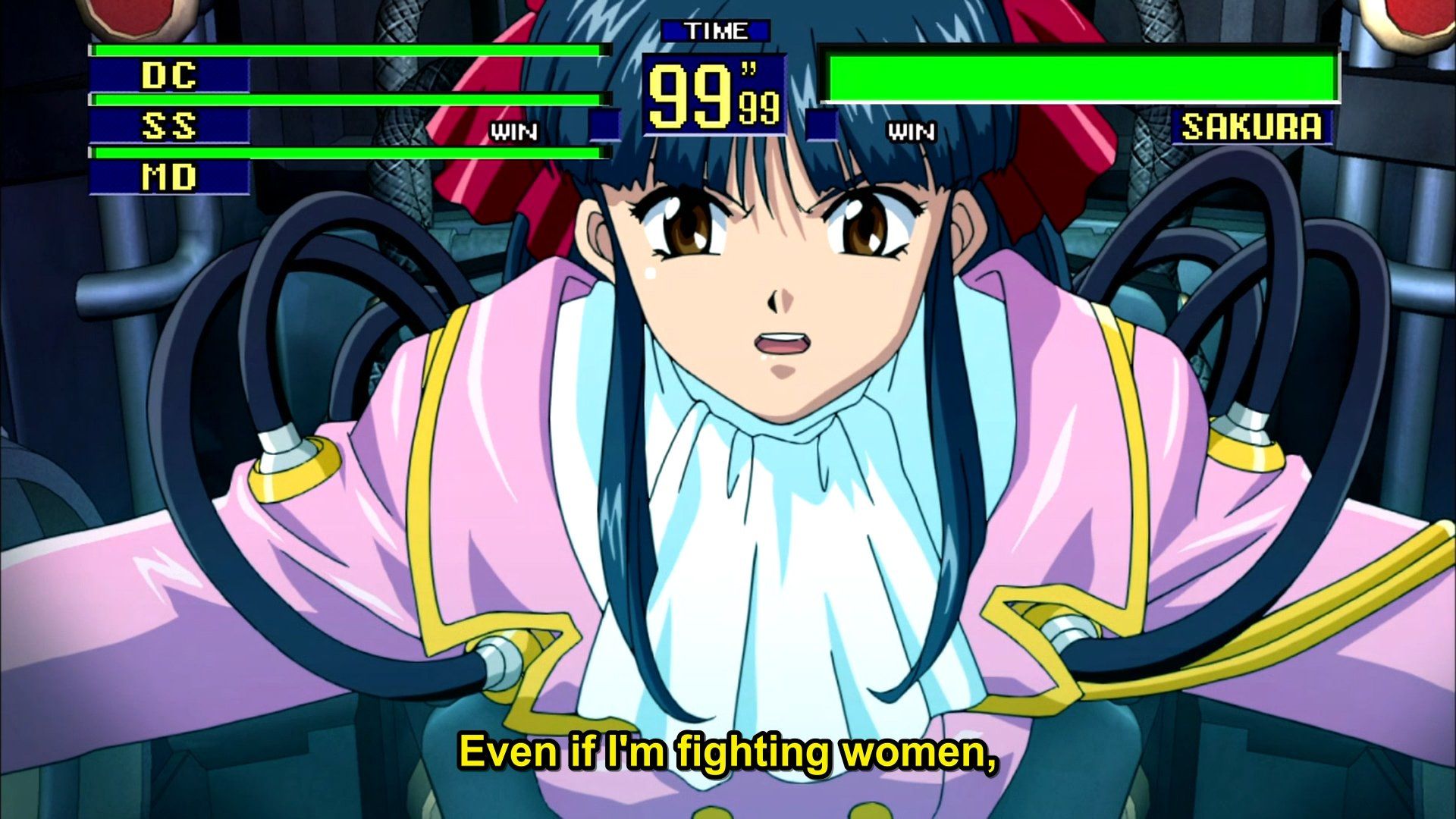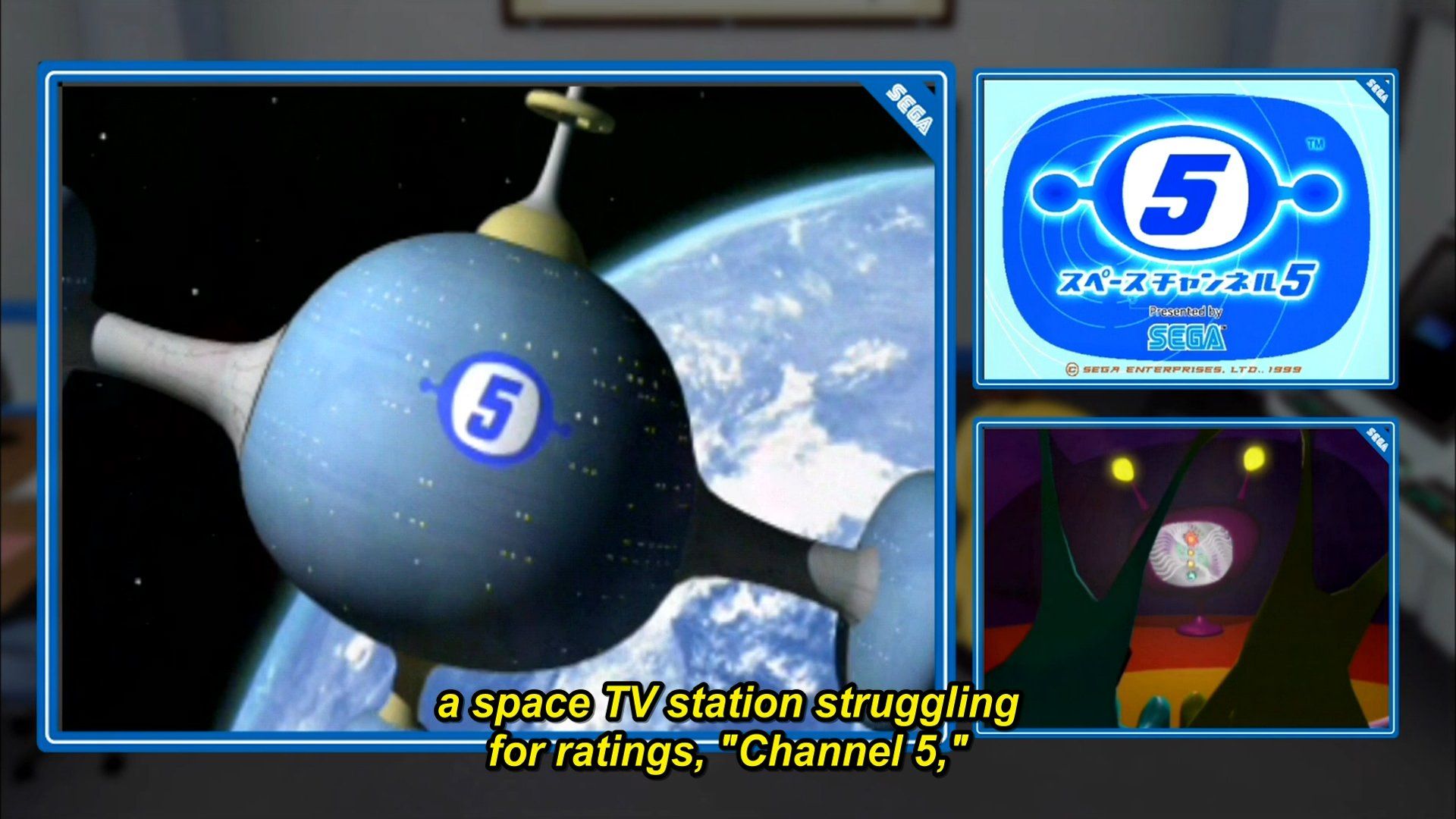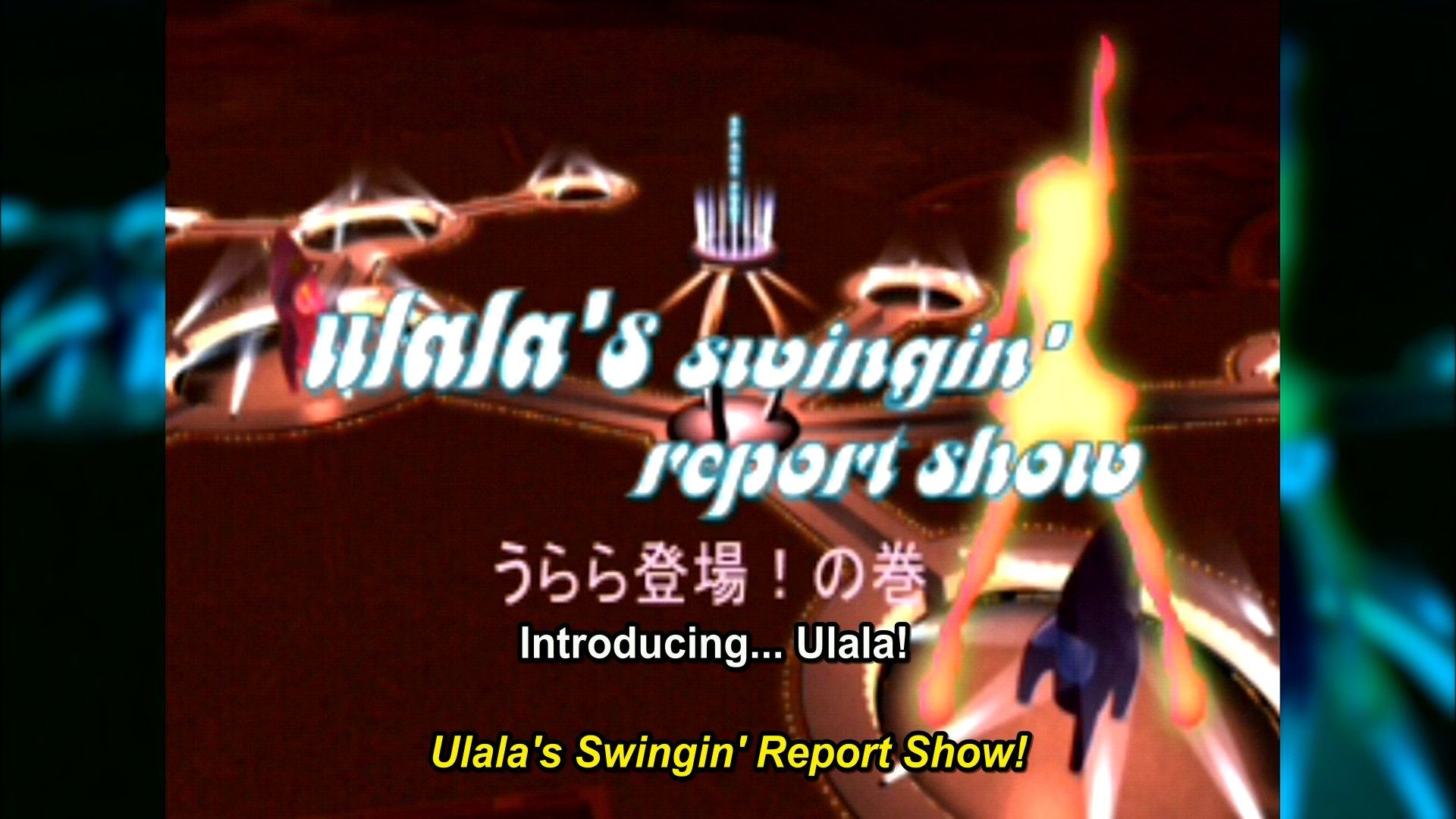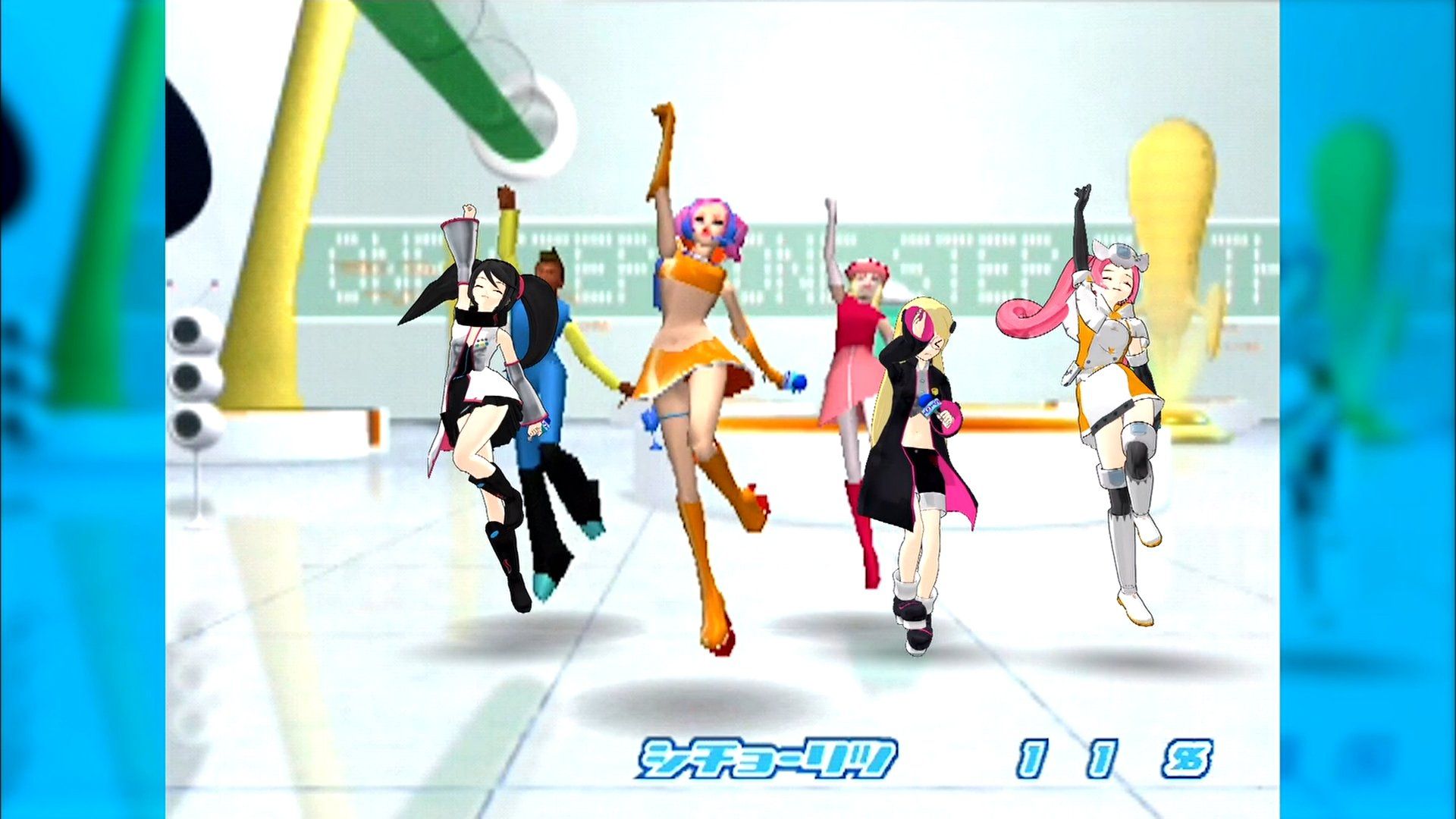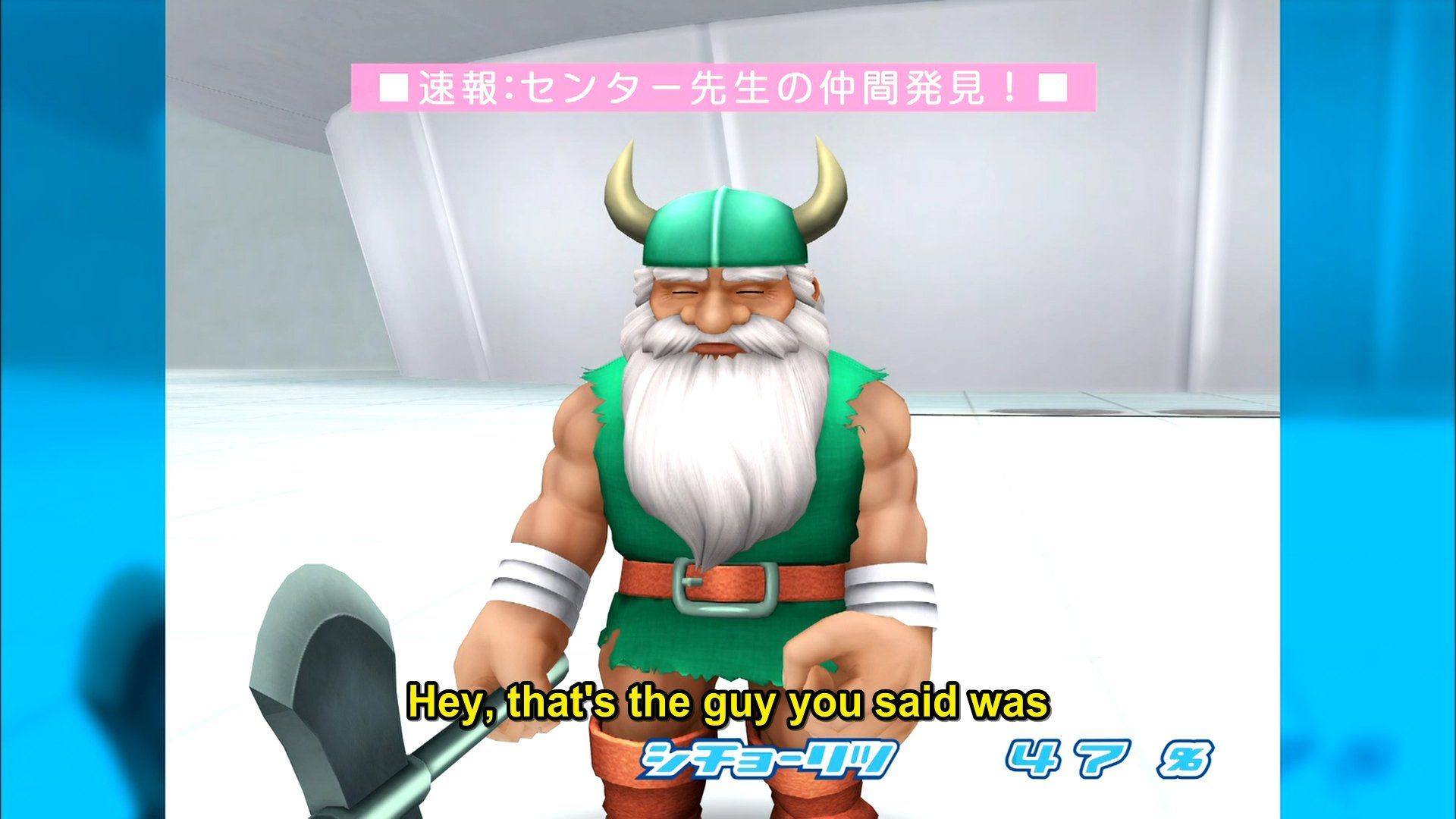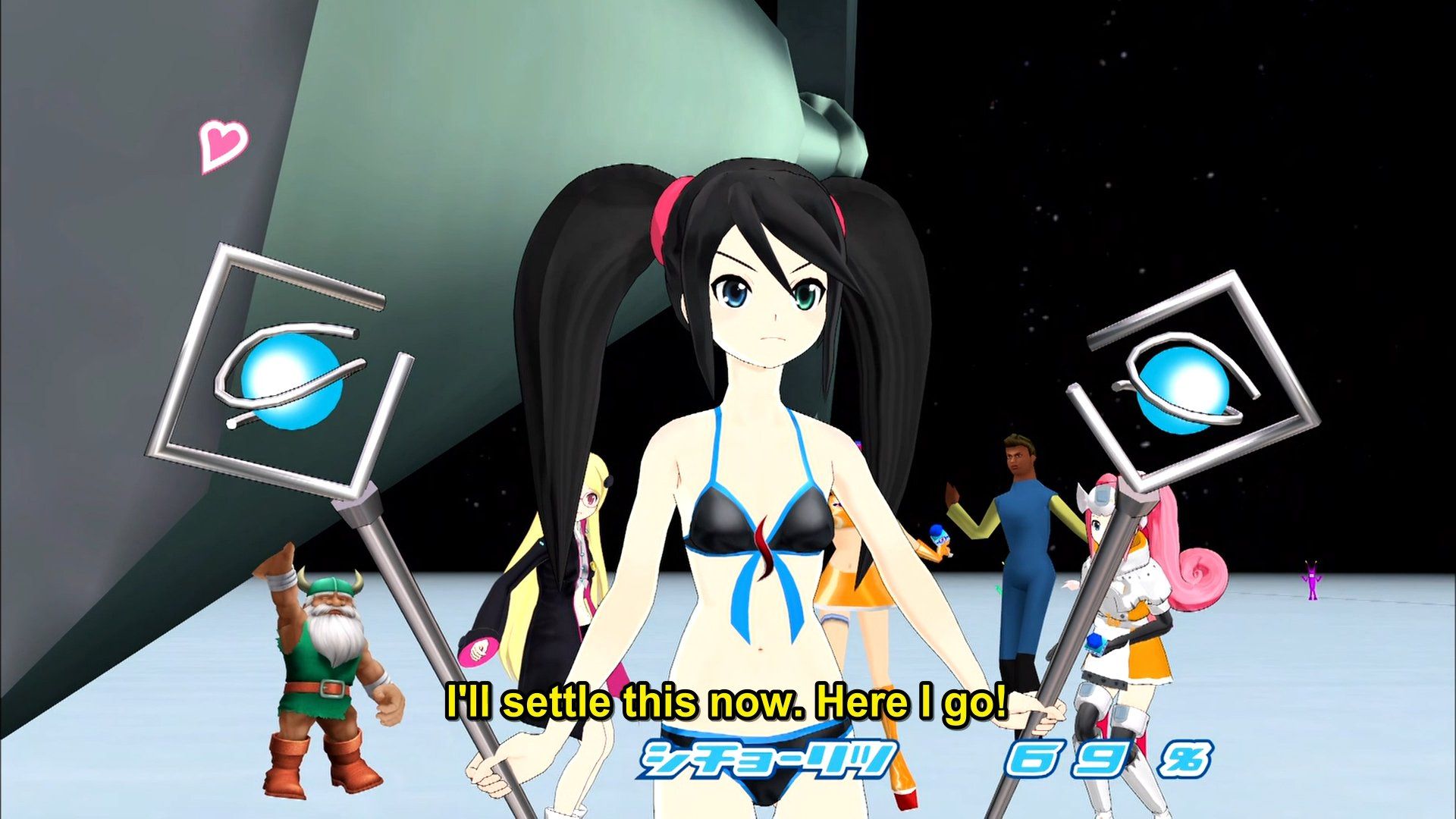[VGMP] Sega Hard Girls 4 - Episodes 1 to 4 References
Rory Joscelyne • 15 March 2022
VGMP: SEGA References from Episodes 1 to 4

It is absolutely
no
exagguration to say this is
the
most reference packed show I have ever seen. As such, I'm only going to go over the first four episodes of the series, but don't worry there is
more
than enough here to whet your appetite for more.
PART 1
- Character References
PART 2
- Atrium References
PART 3
- Classroom References
PART 4
- Episodes 1 to 4
PART 5
- Episodes 5 to 8
PART 6
- Episodes 9 to 11
PART 7
- Episodes 12 and 13
PART 8
- Episode 14/The OVA Movie
I won't be referring to anything about Sehagaga Academy itself, as this has already been covered in two of the previous articles giving a deep dive into the many references in these rooms. The references in this article will only
be episode-specific references.

We begin with Episode 1 and Dreamcast's attempt to dial up to the internet to get some answers for Saturn. The camera zooms into her face, her eyes dullen, and we are shown the connection screen in a thought cloud. This screen is directly from Dream Passport 2, the Dreamcast web browser in Japan. They even play the sound effect of a dial-up modem scrambling audibly to connect.
The three images above show some of the references Mega Drive gives from her 16 BIT encyclopaedia as the girls try to find Saturn a fitting boyfriend. While it's only stated in dialogue, Saturn's description of her perfect husband is actually a description of Segata Sanshiro (we'll cover him in a later episode as he has a single visual reference at the end) but the girls twist the description to apply to almost any guy.
The first screen is from Golden Axe, and starts with the suggestion of Gillius Thunderhead (the green-dressed dwarf), which Saturn reacts to with disgust as he's so old. Mega Drive then suggests Ax Battler (the man in blue pants).
When Saturn rejects Ax Battler, Dreamcast suggests the main man from Outrun (the driver/player character). Saturn begins complaining that she can't even see his face, so they wait for him to crash to finally give Saturn a good look at the man's face.
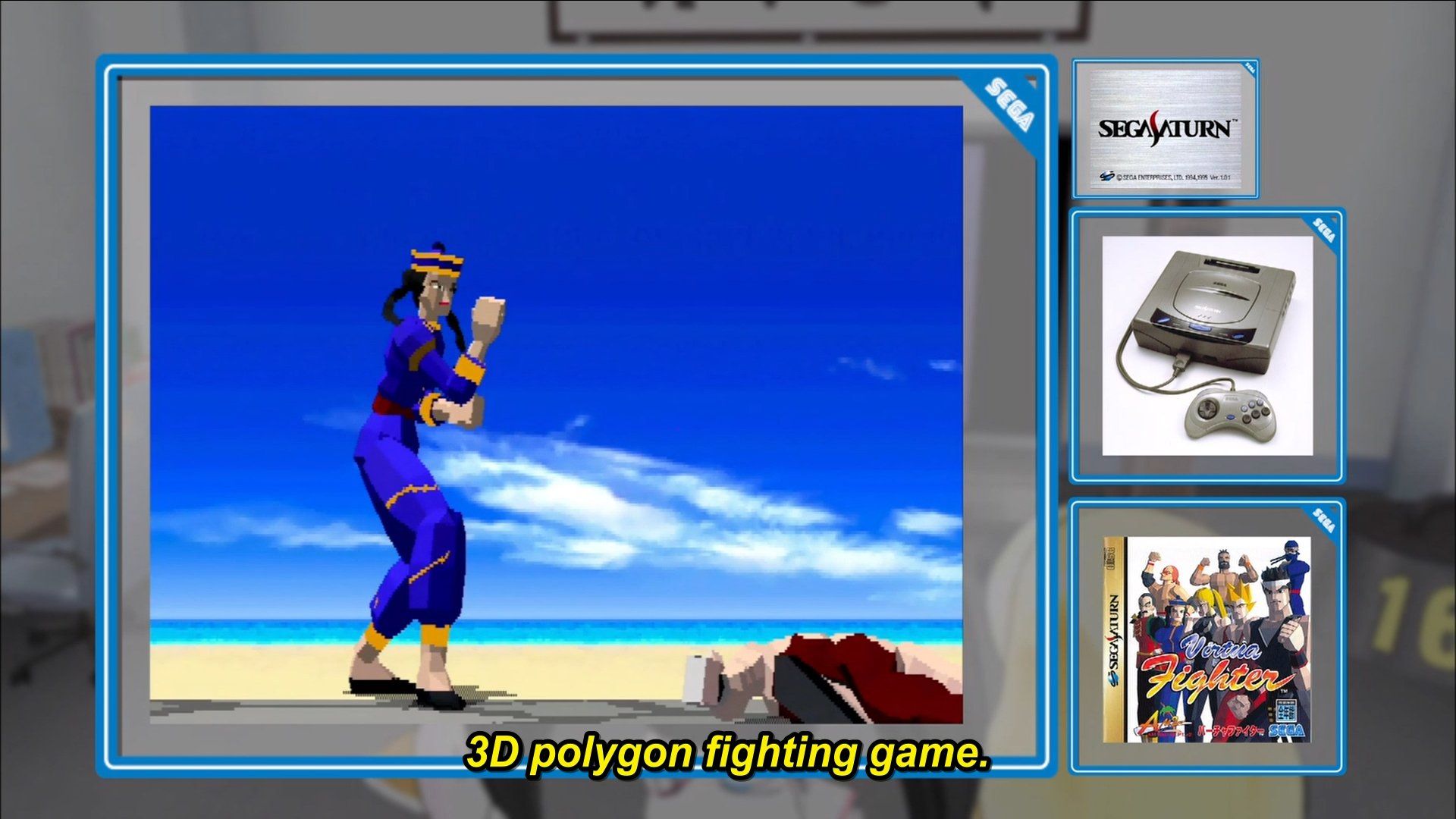
The final reference for this episode (since episode 1 mostly introduces us to the characters and Academy) is the info panels Center-Sensei uses to describe their first challenge inside of Virtua Fighter. He shows footage of Pai defeating Jacky in a fight.
In the smaller right hand panels are the following;
The Japanese Sega Saturn startup screen (The stylised S is the evidence for it being the Japanese version).
The original Japanese Saturn. Unlike in the West (where it was black) the Saturn released in a dull military grey in Japan.
The Japanese cover art for the original Virtua Fighter release on Sega Saturn.
Entering Episode 2, we begin in the world of Virtua Fighter at the character selection screen - the Sega Hard Girls versus Akira. The text at the top of the screen translates to 100 Matches, so it appears the girls have to do the 100 Man Kumite. Here we can see that the version they're playing is the first release of Virtua Fighter as Akira appears with almost no textures.
The second image is a custom loading screen from Virtua Fighter - outside of the LOADING... PLEASE WAIT text, I'm pretty sure the rest of it is new for the show. The top (white) text seems to translate to "Hundred Hands". The Japanese text below the two characters seems to translate to;
"Hundred friends can make 100 people, food and drink, Futo mountaintop." - I'm pretty sure this translation is wrong
The third image is when Jeffry fights the Sega Hard Girls. Jeffry is another character from Virtua Fighter, so it's right that he appear in this game. The next set of appearances, however, aren't from Virtua Fighter.
The Sega Hard Girls start to come up against increasingly bizarre character choices from other SEGA games (which are luckily all defeated in one hit by Dreamcast's overpowered headbutt attack).
These are the B.Bros from Golden Axe, two hammer wielding mini-bosses. Later in the episode they start to do recolours of the B.Bros as additional enemies for the SHGs too.
The next opponent is Bruno Delinger from Dynamite Deka (aka Die Hard Arcade internationally), which was a side-scrolling beat-em-up released in arcades and on the Sega Saturn. The sequel, Dynamite Deka 2, was released internationally as Dynamite Cop on the Sega Dreamcast.
Next up is Alex Kidd, who was something of a mascot for Sega during the 1980s and on their Master System hardware (He didn't make an appearance on the SG-1000). Every game release was a Master System exclusive with the exception of Alex Kidd: The Lost Stars (which saw an Arcade release too) and Alex Kidd in the Enchanted Castle which was a Mega Drive exclusive. His first game, Alex Kidd in Miracle World, was remastered and released on all modern games machines in 2021.
Alex Kidd has continued to appear in Sega titles, including Sega Superstars Tennis (2008), Sonic & Sega All-Stars Racing (2010), Sonic & All-Stars Racing Transformed (2012) and a cameo in Sonic Colors Ultimate (2021).
We then jump to Altered Beast, with one of the main character transformations - the Werebear.
We then finish on Flicky - the oldest of all
the Sega franchises seen in these episodes. While most Sega fans will likely remember the blue bird from the Sonic the Hedgehog series, Flicky starred in his own title in May 1984. Flicky was released in Arcades, on the SG-1000, Mega Drive (in 1991), FM-7, MSX, PC-8801 and Sharp X1 home systems. The character continued to appear across many Sega releases during the mid-80s, becoming something of a mascot for their arcade division. Camero appearances of Flicky include;
Teddy Boy Blues (1985) as a shooting target. Bloxeed (1988) as a special weapon. SDI (1987) as a code-activated playable character. Flash Point (1989) as a cameo, wishing players Good Luck before each round. Super Monaco GP (1989) on race track banners and on the Game Over screen. Sonic the Hedgehog series (1991 - present) as a trapped animal in badniks. Sonic 3D: Flickies' Island (1996) which is an isometric Sonic title with the same gameplay as the original flicky arcade game - this time Sonic collects Flickies who follow him to safety. He has continued to make cameos in Shenmue (1999), Gunstar Super Heroes (2005) and Mario & Sonic at the Olympic Games (2007).
The second to last opponent is Hercules Ricky Blue (I think this is a mistranslation from Blue Hercules Beetle) from the Japan exclusive Arcade title Mushiking (2003). Mushiking was an arcade title where you needed special collectible cards (akin to Pokemon cards) and then had to scan each card into the Mushiking machine, which will initiate a battle and (if won) dispense new cards. The game made it into the Guinness World Records with the highest number of tournaments held for an Arcade title.
Yakuza Kiwami (2016) actually includes a parody of this game, called "MesuKing", where the different bugs are represented by various bikini-clad women. You collect the women via the cards, select the "insect" to play as and give her a variety of wrestling moves. The match is then a Rock, Paper, Scissors match with different stats given to different moves. The third image shows a similar type of beetle (An Atlas Beetle) as represented in MesuKing.
The final opponent is Sakura Shinguji from the Japanese exclusive steampunk series, Sakura Wars (1996 - present), where groups of women with magical abilities control steam-powered mechs to fight demons. It is a rare example of a dating simulation/visual novel including genuine tactical RPG battle elements.
Originally a Sega Saturn title, Sakura Wars has been remade numerous times including a full remake for the Playstation 2 (called Sakura Wars: In Hot Blood). "Sakura Wars 2: Thou Shalt Not Die" was also released on the Sega Saturn, with "Sakura Wars 3: Paris is Burning" and "Sakura Wars 4: Fall in Love, Maidens" following on the Sega Dreamcast.

Episode 3 is largely a filler episode, with the girls continuing to try and score Saturn a husband and train her up as a weathergirl. It isn't until we get towards the end of the episode that the Sega references start to appear.
After unsuccessfully trying to train Saturn as a Weathergirl, Mega Drive gives it a go. On the screen behind her is the artwork of Professor Asobin, an anthropomorphic rabbit who stands as the first unofficial mascot of Sega. He appearing in almost every SG-1000 game manual from the console's launch on July 15th 1983, going so far as to make an appearance on some early Mark III (Japanese Master System) game manuals, and those of several Sega My Card titles. He would appear towards the back of the booklet and give out hints and tips for each title - however Mega Drive does speak about this later in the series and states some of the "advice" was horrifyingly useless.
It's worth noting that the design of Center-Sensei in Sega Hard Girls is essentially that of Professor Asobin, albeit in a blocky Minecraft style. Later in the series we're introduced to an evil form of Center-Sensei who calls himself Black Asobin - clearly harkening back to this character. It's also worth mentioning that the character of Sega Mark III in Sega Hard Girls also takes visual cues from Professor Asobin, with the magic, top-hat and rabbit ears.
Towards the end, we enter the world of Space Channel 5 (A Dreamcast dance game, based on an idealised 1960's fashion). In this particular episode, the entire scenery is a rebuild of the one from the game (there's a few differences), however the footage would be blended with game captures in the next episode (notable by a drop in visual quality whenever it does).

The final reference in the episode is by Mega Drive. When they realise she dances like a robot, Dreamcast and Saturn mockingly dress her in a box. After a certain amount of shame, Mega Drive hides herself inside the box and states;
"My processing speed is fundamentally way lower than yours!"
This is a reference to the difference in processor speeds between the consoles. The Mega Drive had 7.6Mhz and an additional 3.58Mhz processor (At best totalling 11.18Mhz) , the Saturn had two processors at 28.6Mhz each (totalling 57.2Mhz), and the Dreamcast had 200Mhz.
Episode 4 starts where Episode 3 left off - with the introduction of Ulala from Space Channel 5. This includes the title card for Ulala's Swingin' Report Show!
The second image I included here because the show creators made a spelling mistake that I couldn't unsee
from every shot once I'd spotted it - especially visible on the Blu-Ray. In the background you can see text pointing out directions to key parts of the spacestation. One is supposed
to read Shuttle Platform, but instead reads Shattle Platform. I don't know how backwards the future is gonna be, but I hope we keep toilets instead of crapping on an open platform.
The third image shows the image quality when the girls are superimposed over recorded game footage. The Dreamcast only output 480p, whereas the Sega Hard Girls are rendered in at least 1080p. The mismatch in detail and cleanliness of the borderlines is obvious.
The fourth image is a similar pose, but this time the entire scene is rendered in the Sega Hard Girls engine. This time Ulala and the two civilians render clean and crisp, and the background loses some of it's blur (though I think a bokeh effect here would have helped match the shots more).
You'll also note Jeffry is out of his game and has wandered into Space Channel 5 for some inexplicable reason.
The final new references here are the appearances of some new characters and objects.
Image one shows Gillius Thunderhead, the green coloured dwarf from Golden Axe, fully rendered in the Sega Hard Girls engine. He spends the rest of the series perving over Saturn, Ulala and any other women in short skirts/bikinis. He's also added to the Lovely Girls competition in Episode 8 for some unknown reason.
The second shows a group of Spacemen and Morolians. Morolians are the "evil" aliens from Space Channel 5, whose rayguns force people to dance uncontrollably (until Ulala's amazing dancing can break them free from the effects). As you can see, they come in all sorts of colours. The spacemen were a type of civilian you'd have to save from the Morolians during the game.
The third picture shows Saturn with her "Twin Stick" wands. I really like the design of these sticks, and it's a cool visual adaptation of the Saturn Twin Stick controllers that were used for various titles.
That's enough for one article, join us for Episodes 5 to 8 in the next article. And go back through the previous Sega Hard Girls articles if you're hungry for more. If you're looking for a series filled with references, you won't get much more in-depth than Sega Hard Girls.
Please check back regularly for updates, and do follow our podcast including our episode on Sega Hard Girls at www.vgmovie.co.uk.

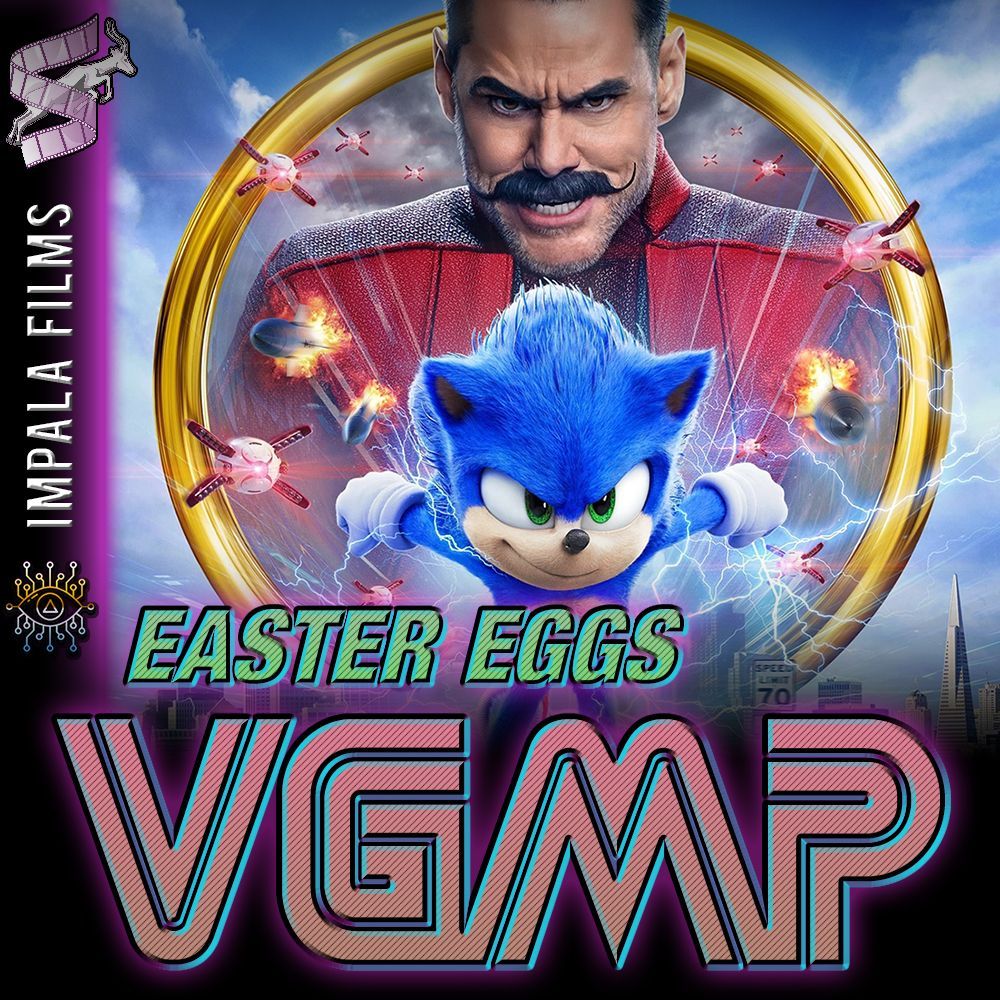
Blue Streak, speeds by... Sonic the Hedgehog (2020) is Hollywood's first big blockbuster attempt to bring Sonic to the big screen. A much more popular effort than the 1996 anime movie, this one sees Sonic come into the "real world", but that doesn't mean that it isn't jam-packed full of Easter Eggs. And some of them are references to other Sega franchises.

First things first - DO NOT WATCH THIS MOVIE. Kung-Fu Master may have the licence for the game, and it may include a few scenes at Arcades, but the story is nothing to do with gaming - and the story it represents is a literal crime. A vile, vile crime. With that out of the way, there are some interesting arcade machines visible throughout this film - all of which are here. So you have been saved from having to watch this vile garbage - and saving you the criminal act of watching it.

Also known as Sonic the Movie, the Japanese OVA was actually a run at a possible series that never materialised, instead leaving us with two episodes hastily stitched into a "feature". And boy, did they push taste and decency for some of this. Other than Robotnik chasing underage skirt, it's largely inoffensive. But unfortunately that story angle wound up kick-starting a long running VGMP joke of Sonic adaptations having to reference breast milk (which the 2020 Sonic movie also references).

I love The Wizard. It's so bad. The first major disagreement between Rory and Jamie in VGMP, Rory fully recommended The Wizard as a movie, whereas Jamie fully rejected it. It's not hard to see why this movie caused such a rift of opinion - it genuinely tries to be a deeper and emotional story, but it's still a Nintendo marketing product (and an out of date one, at that). One thing The Wizard does have, is a lot of videogame references.

The House of the Dead movie brings together two major events in film. It's the first foray by Uwe Boll into video game adaptations - the start of a terrible career. And it was the last ever movie to use the turn-table technique for 360 degree shots, as it was too dangerous to keep using - much like allowing Uwe Boll to have a film career. This film doesn't have many proper references, instead lazily throwing in random micro-shorts from the first three House of the Dead games (in no particular order, for some reason).

The first appearance of Jon Gries in a video game culture movie, and he would return in Noobz (2012) to steal yet another movie. Joysticks is an awful comedy movie, attempting to cash in on cheap teen humour of the time with a big dose of objectifying women. But to it's credit, it does showcase a lot of great arcade cabinets from 1983, and all in fantastic condition too! These screengrabs are ripped from the limited-run Blu-Ray release of the movie, which represents the best this film has ever looked. However this was a relatively low budget feature of it's time, so don't expect prestine visuals.
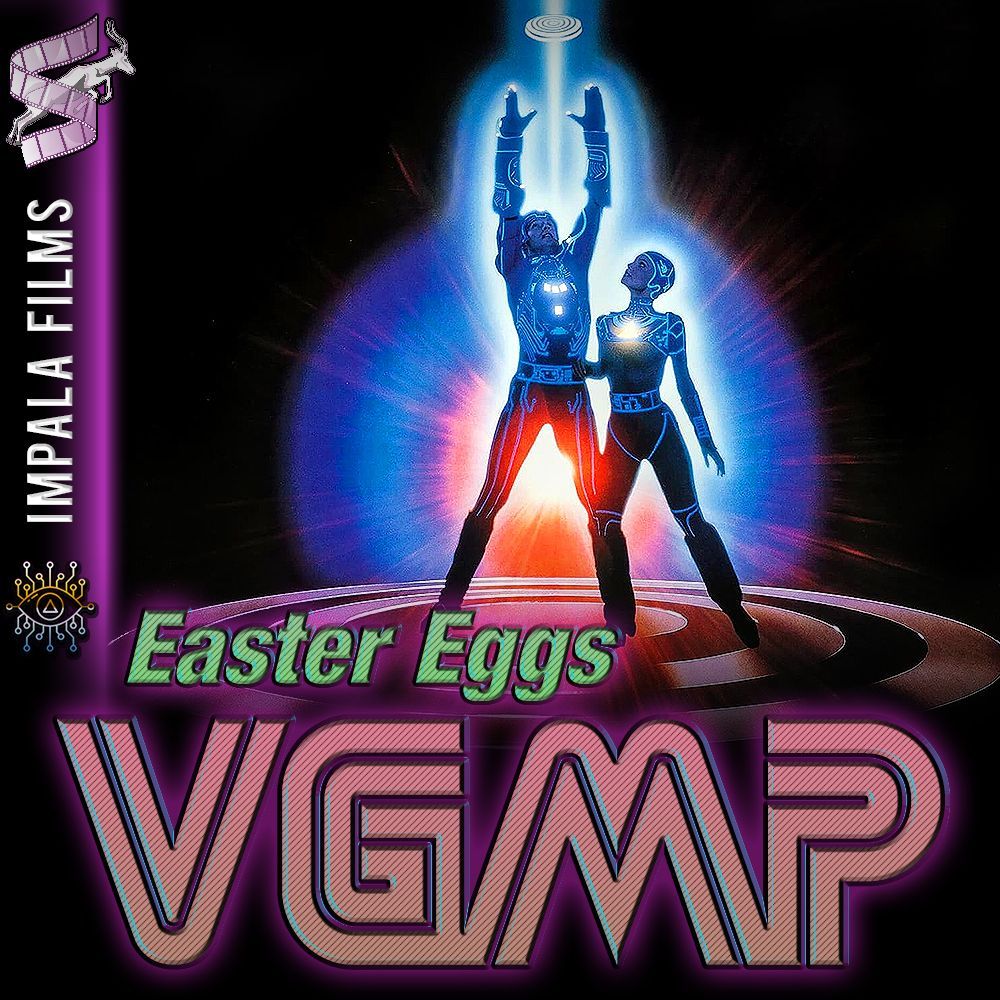
Tron is an undisputed 1982 classic that had a major impact on 80's culture and gaming aesthetics as a whole. And yet, when we reviewed it, it turns out the movie itself is a big bag of style over substance. The main videogame the movie revolves around is Space Paranoids, and it is not a real game. Several videogames were later made of Tron, but none of those appear in this movie.

Gamebox 1.0 is an odd 2004 movie starring the guy who played Harvey in Sabrina the Teenage Witch. You could technically call it a dramatic horror, if any of it was dramatic or a horror. As you can see from the shot above, the details were so vital to this film that there's a guy at "work" just staring at a blank screen. Regardless of the low budget nature of the film, there are still a surprising number of references hidden in this movie.



